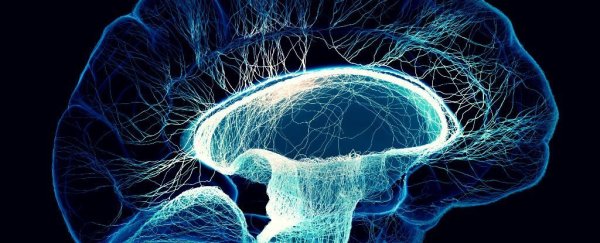New research sheds light on a tricky idea of consciousness: There's a difference between what the brain takes in and what we're consciously aware of taking in.
Scientists now think they've pinpointed the brain region where that conscious awareness is managed.
The team, from the Hebrew University of Jerusalem in Israel and the University of California, Berkeley (UC Berkeley), in the US, found sustained brain activity in the occipitotemporal area of the visual cortex in the back of the brain.
While this activity dropped to around 10–20 percent of its level about 300 milliseconds after an original visual stimulus, the pattern of activity remained while the stimulus was viewed.
That was in contrast to other brain areas, where information disappeared entirely within half a second (500 milliseconds).
"This stable representation suggests a neural basis for stable perception over time, despite the changing level of activity," says psychologist Leon Deouell from the Hebrew University of Jerusalem.
In other words, this neural region is where we not just notice something but also notice that we're noticing it. As the visual stimulus changed – a series of images – so did the brain activity recorded by the researchers. Machine learning algorithms then filtered out the noise and spot patterns.
Researchers enlisted 10 epilepsy patients for the study who were already scheduled to have electrodes fitted inside their skulls. These electrodes allow for a more complete measure of brain activity over time, with less guesswork, compared with other brain scanning methods that work externally.
"We are adding a piece to the puzzle of consciousness – how things remain in your mind's eye for you to act on," says psychologist Robert Knight from UC Berkeley.
The researchers can't say for sure how their findings relate to consciousness, but they suggest that the sustained activity in the visual cortex could be fed back to the prefrontal cortex, where thoughts and actions are managed.
There remains a lot of scientific debate about how this all does or doesn't work. After damage to one brain hemisphere following a stroke, for example, some people experience unilateral neglect: They only consciously perceive half a photo or scene but emotionally react to it in its entirety.
Ultimately, further research and data gathering, which leads to a better understanding of consciousness, could help restore the brain when conditions such as unilateral neglect take hold.
"What is required for something not only to be sensed by the brain but for you to have a subjective experience?" says Deouell.
"Understanding that would eventually help us understand what is missing in the cognitive system and in the brains of patients who have this kind of a syndrome."
The research has been published in Cell Reports.
